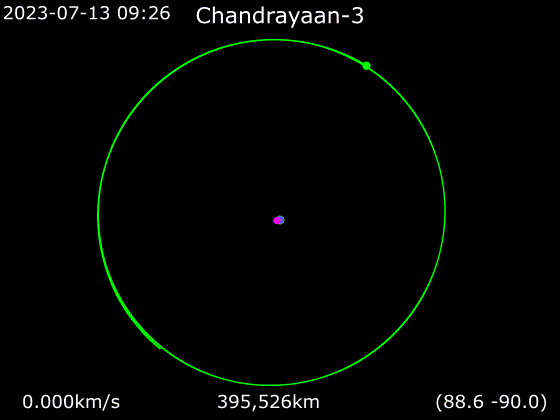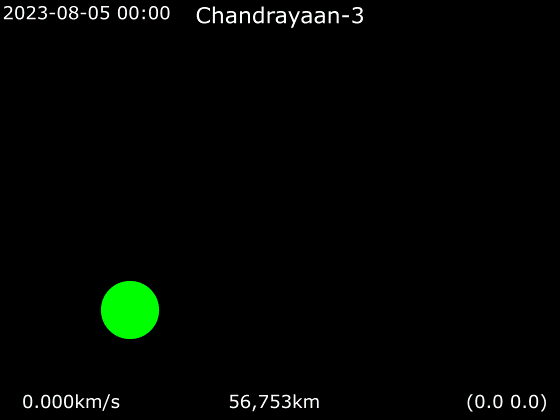Based on my cheatsheet, GNU Coreutils, sed, awk, ImageMagick, exiftool, jdupes, rsync, jq, par2, parallel, tar and xz utils are examples of commands that I frequently use but whose developers I don’t believe receive any significant cashflow despite the huge benefit they provide to software developers. The last one was basically taken over in by a nation-state hacking team until the subtle backdoor for OpenSSH was found in 2024-03 by some Microsoft guy not doing his assigned job.
baltakatei
/ˈbɑːltəkʊteɪ/. Knows some chemistry and piping stuff. TeXmacs user.
Website: reboil.com
Mastodon: baltakatei@twit.social
- 0 Posts
- 16 Comments

 12·1 year ago
12·1 year agoThe Seattle police officer in the video didn’t hit the woman with his cruiser. One of the people in his police union did, of which he is vice-president.

 1·1 year ago
1·1 year agoWhat’s with that si parameter?

 3·1 year ago
3·1 year agoThe lander and rover has until September 4th until it loses sunlight and therefore power (it doesn’t have an RTG).

 6·1 year ago
6·1 year ago

 12·1 year ago
12·1 year agoI imagine more people would use Tor if they could get paid to provide bandwidth (like Orchid as described on FLOSS Weekly 633).
It’s like StumbleUpon.

 31·1 year ago
31·1 year agoI’ll believe it when it doesn’t crash and burn like the last one.
Check back here on 2023-08-23, then.

 81·1 year ago
81·1 year agoISROʼs last lunar exploration mission was in 2019 and called Chandrayaan-2. The lunar orbiter succeeded. The lunar lander, named Vikram, failed, crashing onto the lunar surface. Vikram contained a lunar rover named Pragyan.
Here is Scott Manleyʼs review of the Vikram failure.
Here is a New York Times gift article link about today’s (2023-07-14) launch.
Here are animations of the planned orbits (Videos (1,2) by Phoenix777 / 🅭🅯🄎 4.0):

 2·1 year ago
2·1 year agoMaybe try out FreedomBox?
freedomboxis a Debian package which automatically sets upapache2,firewalld,fail2banand Letʼs Encrypt. It also automatically adds pre-canned configuration files for applications you install with it (e.g. Mediawiki, WordPress, Matrix, Postfix/Dovecot). The theoretical goal of FreedomBox is to allow anyone to set up a webserver and administer it via a webUI. So, although I would say itʼs not quite there yet for command-line-illiterate users, I have found the software useful as a turnkey server to see what makes certain web applications tick, albeït in mostly vanilla form.For example, after installing a new app like WordPress, you could examine what exactly the FreedomBox scripts changed in the
/etc/apache2/or/etc/fail2ban/configuration files.

 2·1 year ago
2·1 year agofgallery
TL;DR:
fgalleryis a dumb static web gallery generator: EXAMPLE, SETUP.There’s fgallery which is a small Debian package that takes an input directory (e.g.
photo-dir) and creates a static website in a new directory (e.g.my-gallery).$ fgallery photo-dir my-galleryDescription
From the Debian package details page.
static HTML+JavaScript photo album generator
“fgallery” is a static photo gallery generator with no frills that has a stylish, minimalist look. “fgallery” shows your photos, and nothing else.
There is no server-side processing, only static generation. The resulting gallery can be uploaded anywhere without additional requirements and works with any modern browser.
Among all the Debian packages similar to this one, this seems the most recently maintained (version 1.9.1 came out 2022-12-31). It is licensed GPLv2+ so the source code is available.
Upload to a web server
After running
fgalleryas described above, uploadmy-galleryto your static web page directory (e.g./var/www/html/with a typicalapache2setup) and open theindex.htmlthrough a web browser.Here’s an example gallery I made just now (setup procedure).
( Photo by Baltakatei / 🅭🅯🄎 4.0 )
Viewing locally with a browser
To view the gallery locally without uploading to a web server (e.g. a Digital Ocean droplet) or static content hosting service (e.g. AWS S3), you can do so with your own web browser. However, because the
fgallerywebpage uses Javascript and since modern browsers refuse to render Javascript in HTML pages at local file system addresses (e.g.file:///) due to same-origin policy, the easiest solution is to make a simple webserver via python3:$ python3 -m http.server -d ./my-galleryThen, you can visit the
my-gallery/index.htmlfile via a localhttp://address athttp://localhost:8000/.Summary
fgallerylacks many complex features (no image database, no metadata editing, no dynamic server processes for editing images, etc.). However, I’d argue its lack of features is the main feature. It just takes a directory of photos and spits out a directory you can plug into your hosting service. Updating the the gallery is just a matter of running the same$ fgallery photo-dir my-gallerycommand again and re-uploading.Edit(2023-07-07T12:05+00): Clarify python3 commend.
TL;DR:
fgalleryis a dumb static web gallery generator: EXAMPLE, SETUP.
Thunderbird’s Blogs and News Feeds feature. Allows me to backup RSS feed data alongside my emails in MBOX format via the ImportExportTools NG add-on.
If it’s anything like SMTP on a Mediawiki or Discourse instance (example notes, then what you probably need is something called “transactional email” (I’m guessing you’re looking at a guide like this?). I’ve made use of this guide for looking up vendors for that service.
In theory, the same server hosting a Lemmy service could also send and receive emails. However, in practice there’s a high probability of these emails landing in spam boxes. The defacto proof-of-work hurdle that inhibits email spam today is paying commercial transactional email companies a monthly fee. I’m hopeful that one day self-hosted email server software will become easier to set up through things like FreedomBox (via Postfix, Dovecot, and Rspamd), but the fundamental reputation problem remains, imo.
So, I doubt a Lemmy setup guide would automatically take care of email setup. In any case, the process involves creating at least one MX record (according to instructions provided by your transactional email service) with your DNS provider which depends on the name servers you have configured for your domain registrar. The transactional email service you select should provide instructions for what port to open, as well as what SMTP URL, user name, password, and postmaster email address to provide to Lemmy.






“Create a python script to count the number of
rcharacters are present in the stringstrawberry.”